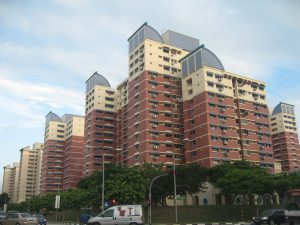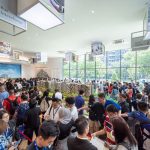A senior property consultant came together with former GIC chief economist and a veteran architect cum policy researcher to propose solutions to key public housing problems on Nov 30.

The senior property consultant Ku Swee Yong, Former GIC economist Yeoh Lam Keong and architect Tay Kheng Soon summarised possible solutions in their paper to address key public housing problems as such:
-
Background and introduction: Singapore has a stellar reputation in having achieved the most extensive, high quality and successful national housing program in the world. The proposals in this paper seek to address the key potential long-term crises in HDB-managed housing and to improve upon it. There are two key public housing problems facing HDB housing today.
-
First, HDB flat owners have no security of tenure beyond 99 years, and the capital values of their flats will sharply diminish towards the end of the 99-year lease. As a result, their life savings will depreciate significantly as they age.
-
As things currently stand, the value of HDB owners’ flats will become zero at the end of their 99-year lease, unless they are fortunate enough to qualify for Selective En bloc Redevelopment Scheme (SERS) midway. However, for the bottom 50% of income earners, the vast bulk of their net worth or life savings is in the value of their HDB flat. For most of them, when their flats go beyond the 40-50 year old mark, the value of HDB flats tends to decline rapidly, just when the owners need to capitalize on their flats ’values to fund their retirement the most. Neither the proposed Voluntary Early Redevelopment Scheme (VERS), the Shortlease Flexi-Flats nor the Lease Buyback Scheme (LBS) currently adequately addresses this problem.
-
Secondly, the current cost of HDB flats for first time buyers of BTO flats relative to their incomes is very high, with the result that it typically takes about 25 years for home buyers to pay off their housing loans. This effectively means that for the greater part of their working lives, many Singaporeans are channelling a significant part of their disposable incomes to paying off their HDB flats, leaving insufficient savings for retirement, medical expenses and education upgrading. The problem is exacerbated for the lower, irregular or uncertain incomes that makes home ownership difficult.
-
The challenge is to craft reform proposals which not only address the concerns identified above, but which are also affordable, fiscally responsible and do not destabilize the existing housing market. To this end, this paper proposes four major reforms to HDB managed housing that will address these key public housing problems and greatly improve the wellbeing of all Singapore citizens.
-
EXTENSION OF LEASE: In order to preserve the value of older HDB flats, our FIRST PROPOSAL is that the Government should do a one-time automatic top up of the leases of all HDB flats owned by Singapore citizens back to 99 years once a HDB flat is 50 years old. This immediately addresses the problem of declining residual values of old HDB flats with short remaining leases. The lease top-up cost should be priced affordably at around 3% of the price of a new resale flat, with support for low income families to enable all citizens to afford it, much like current HDB upgrading schemes. 4
-
REPLACEMENT OF AGED FLATS: The first proposal above brings with it a technical issue which needs to be solved: All reinforced concrete flats need to be torn down and rebuilt on a 100-150 year horizon for structural safety reasons. Accordingly, our SECOND PROPOSAL is that the Government fund the rebuilding cost of all HDB flats every 100 years. The total bill for such a nation-wide exercise is estimated at $150 – 200 billion dollars over 100 years. While the cost of this program is large over the long term, it is nevertheless eminently affordable and sustainable when amortized over 100 years.
-
It is proposed that the Government fund this exercise by setting aside $1.5- 2bn annually (a mere 0.3-0.4% of current GDP) into a sinking fund for this purpose. As with the current SERS, a fresh 99-year lease should be given to all HDB flat owning citizens after rebuilding.
-
NEW PRICING POLICY OF NEW FLATS: The THIRD PROPOSAL is that all new BTO flats be sold at around construction cost of $150-200 per square foot. Such flats will not be eligible for sale in the resale market for the first 15 years to help effectively safeguard the price of current resale flats. One family can only own one such flat at a time. Flat owners older than age 65 should also be allowed the option to downgrade once to a smaller, low cost BTO flat to further boost retirement adequacy.
-
SOCIAL RENTAL HOUSING AS PART OF THE SOLUTION FOR KEY PUBLIC HOUSING PROBLEMS: The FOURTH PROPOSAL is that for citizens who still cannot afford home ownership, sufficient numbers of good quality, subsidized rental flats be maintained with a reasonable security of lease tenure. This is needed to ensure that housing is affordable to all, especially for the less well off in the gig economy with increasingly unstable employment.
-
Fiscal Implications: These reforms are eminently affordable and fiscally sustainable, and will leave substantial fiscal resources available for other important major budget items. The proposals will preserve the life savings of the population invested in HDB flats, especially the bottom 50% of income earners, thus reducing the need for what would otherwise be larger state retirement income support.
-
Long-term Positive Macroeconomic Impact: At the macro level, these reforms will greatly help overall retirement adequacy, especially for our elderly poor (Section 3). It will boost domestic demand through lower “forced savings” and therefore greater consumption. There is also the fiscal boost of continuous rebuilding of the housing stock which will be renewed to best architectural standards every 100 years. Additionally, these proposals will also ensure all new flat buyers will be able to afford high quality flats that they can fully pay off in 10-15 years. This will release more savings for retirement and entrepreneurial activity which are currently locked up in housing while minimizing the negative impact on the values of resale flats. The proposed reforms are not expected to destabilize either the existing HDB resale market nor the private housing market.
-
Social Well Being and Intergenerational Benefits: At the level of social wellbeing, these reforms will not only ensure Singapore citizens the very significant security of being able to both afford and live in the flat they purchase until the end of life but will also enable them to preserve their flat’s value as either an asset to 5 monetize in retirement or a bequest to the next generation. This further helps sustain the social networks needed for happy ageing in-situ as well as for longterm community building. The rental reforms will also address the basic housing needs of the less well-off in the uncertain labour markets of the future.
-
Towards a Renewed Social Compact: The value proposition to these four major proposed HDB reforms, amounting to a new social compact, is that any citizen will be able to reasonably afford a flat that will preserve its value and be rebuilt to a high and safe standard across successive generations. All citizens will have access to affordable, high quality housing that suits them, be it ownership or rental. This will be a level of public housing achievement tied to citizens’ rights that will be unparalleled anywhere in the world. It will give Singapore citizenship a substantial new value and meaning.
-
In the face of growing retirement inadequacy with a rapidly ageing population, increasing uncertainty of employment as well as inherently expensive housing costs due to our limited land size, it is important for Singaporeans to capitalise on our fiscal, public land ownership and organisational strengths to reform current public housing policy to attain the full potential of public housing for the good of all citizens. The rebuilding, in 100 years, of all flats, neighbourhoods and HDB towns will constantly introduce new urban models that are climate adapted, energy efficient, information rich with built-in intelligence such that the Singapore population can “live, learn, work, play, farm and heal.”
-
THE STRUCTURE OF THIS PAPER ADDRESSING KEY PUBLIC HOUSING PROBLEMS: Section 1 outlines the key public housing problems facing public housing in HDB today and focuses on the dynamics of declining lease values over time and the severe adverse implications for life savings, especially for the bottom 50% of income earners.
-
Section 2 discusses key public housing problems of affordability of HDB flats for first time buyers and the poor as well as the likely growing numbers of citizens with uncertain incomes in the volatile and fragmented labour markets of the future.
-
Section 3 proposes a solution to the problem of sharply declining HDB flat values past year 50 of a flat’s lease tenure in the form of an affordable lease extension process and suggests some approaches to the rationale of pricing such lease extensions. Ultimately, we propose simple guidelines to a subsidised system of such pricing to ensure universal affordability based on the premise that HDB leases are a unique public good in the first instance and should not be taken as a market driven asset. It also discusses the technical need for rebuilding HDB estates every 100 years to ensure structural integrity and usability and proposes that the Government pay for this eventual rebuilding from an eminently affordable annual ‘sinking fund’.
-
Section 4 discusses the benefits and the broad positive macroeconomic impact of such measures on retirement adequacy, household savings, technological advancements and economic growth.
-
Section 5 argues the case for the fiscal sustainability of such measures while not crowding out other needed major budgetary spending.
-
Section 6 discusses the proposed solutions to the thorny dilemma of the need for affordable new BTO flats while at the same time maintaining the value of existing resale flats. It proposes all new BTOs be sold at around construction cost as well as the need for an adequate supply of good quality, HDB rental flats. It makes an important suggestion that such low-priced BTO flats be segmented from the resale market for the first 10-15 years to preserve the current value of resale HDB flats It also argues that HDB flat owners at age 65 should be entitled to downgrade to a smaller low-cost BTO flat to help fund their retirement adequacy owing to rapid demographic ageing and growing longevity.
-
Section 7 concludes






